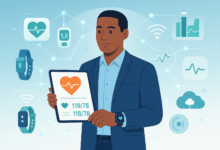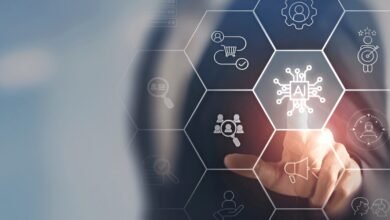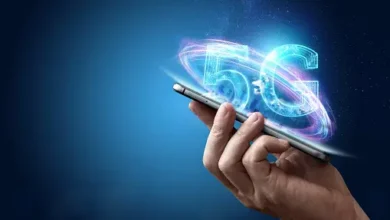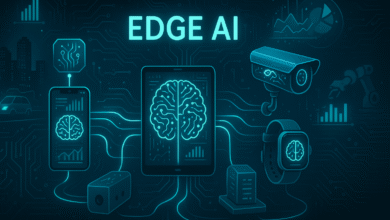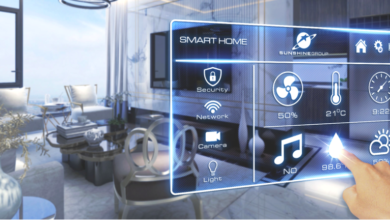The Role of IoT in Personalized Medicine and Patient-Centric Care
Discover how IoT transforms personalized medicine with real-time monitoring, smart devices, and patient-centric care for better outcomes.
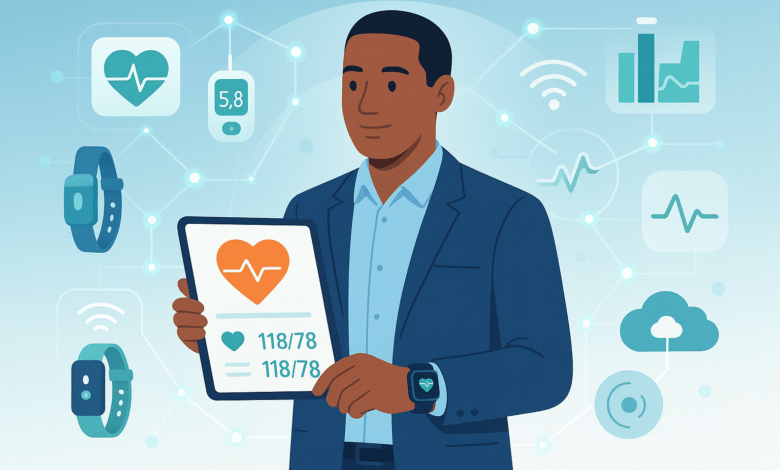
The convergence of the Internet of Things (IoT) and healthcare represents one of the most significant transformations in modern medicine. As we move toward an era of personalized medicine and patient-centric care, IoT technologies are revolutionizing how healthcare providers deliver services, monitor patients, and make clinical decisions. This paradigm shift from traditional hospital-centric care to individualized, data-driven healthcare is fundamentally changing patient outcomes and experiences.
IoT in healthcare encompasses a vast network of interconnected medical devices, wearable sensors, and smart systems that continuously collect, analyze, and transmit health data. From remote patient monitoring systems to intelligent implantable devices, the Internet of Medical Things (IoMT) is creating unprecedented opportunities for precision healthcare delivery. The global IoMT market is projected to reach $187.60 billion by 2028, reflecting the rapid adoption of these transformative technologies across healthcare systems worldwide.
The integration of IoT medical devices enables healthcare providers to move beyond episodic care toward continuous health monitoring and proactive intervention. This shift empowers patients to take control of their health while providing clinicians with comprehensive, real-time data to make informed decisions. As we explore the multifaceted role of IoT in personalized medicine, we’ll examine how these technologies are reshaping patient care, improving health outcomes, and creating more efficient healthcare delivery systems.
Understanding IoT in Healthcare and Its Evolution
Smart healthcare systems powered by IoT technology represent a fundamental shift from reactive to proactive medical care. At its core, IoT in healthcare involves the seamless integration of connected health devices that communicate autonomously over networks, collecting and transmitting vital health information without requiring constant human intervention.
The evolution of digital health has been accelerated by advances in sensor technology, wireless communication, and cloud computing. Modern health monitoring systems can track everything from basic vital signs to complex biomarkers, creating comprehensive health profiles for individual patients. This technological foundation enables precision medicine approaches that tailor treatments to each patient’s unique characteristics and health patterns.
Key Components of Healthcare IoT Systems
The infrastructure supporting IoT healthcare applications consists of several critical components:
- Sensor Networks: Advanced medical sensors embedded in wearable devices and medical equipment
- Communication Protocols: Secure wireless networks enabling real-time data transmission
- Cloud Platforms: Scalable storage and analytics systems for processing massive health datasets
- AI Analytics: Machine learning algorithms that identify patterns and predict health outcomes
- User Interfaces: Patient and provider dashboards for accessing and interpreting health data
Healthcare data analytics powered by IoT systems enable predictive modeling and early intervention strategies. These systems can detect subtle changes in patient health status that might otherwise go unnoticed, facilitating timely medical interventions that can prevent serious complications or hospitalizations.
Remote Patient Monitoring: The Foundation of Patient-Centric Care
Remote patient monitoring (RPM) represents one of the most impactful applications of IoT in healthcare, fundamentally transforming how patients receive care outside traditional clinical settings. This technology enables continuous surveillance of patient health parameters, creating opportunities for early intervention and personalized treatment adjustments.
Transforming Chronic Disease Management
For patients with chronic conditions such as diabetes, hypertension, and heart disease, IoT medical devices provide continuous monitoring capabilities that significantly improve disease management outcomes. Wearable health devices can track glucose levels, blood pressure, heart rate, and other vital signs around the clock, transmitting data directly to healthcare providers.
Consider the impact of continuous glucose monitoring for diabetic patients. Traditional fingerstick testing provides only snapshot readings, while IoT-enabled glucose monitors deliver real-time data streams that reveal patterns and trends. This comprehensive data enables healthcare providers to adjust treatment plans dynamically, resulting in better glycemic control and reduced complications.
Real-Time Monitoring and Intervention
Real-time monitoring capabilities of IoT systems enable immediate response to health emergencies and deteriorating conditions. Smart wearable devices can detect falls, irregular heart rhythms, or sudden changes in vital signs, automatically alerting emergency services or healthcare providers. This rapid response capability is particularly valuable for elderly patients living independently or those with high-risk medical conditions.
The integration of predictive analytics with real-time monitoring creates powerful early warning systems. Machine learning algorithms analyze historical patient data alongside current readings to identify patterns that precede adverse health events. This predictive capability allows healthcare teams to intervene before conditions become critical, potentially preventing hospitalizations and improving patient outcomes.
Wearable Technology and Smart Medical Devices
The proliferation of wearable health devices has democratized health monitoring, placing sophisticated medical sensing capabilities directly in patients’ hands. These devices range from consumer-grade fitness trackers to medical-grade monitors approved by regulatory bodies like the FDA for cybersecurity in medical devices.
Consumer and Medical-Grade Wearables
The distinction between consumer and medical-grade wearables is becoming increasingly important as these devices gain acceptance in clinical settings. Consumer devices like smartwatches and fitness trackers provide valuable health insights, but medical-grade wearables offer enhanced accuracy, reliability, and regulatory compliance necessary for clinical decision-making.
Medical sensors embedded in wearable devices can monitor:
- Vital signs monitoring: Heart rate, blood pressure, respiratory rate, and temperature
- Activity tracking: Steps, sleep patterns, and physical activity levels
- Specialized metrics: Blood oxygen saturation, ECG readings, and stress levels
- Environmental factors: Air quality, UV exposure, and location data
Smart Implantable Devices
The next frontier in IoT medical devices includes smart implantable systems that provide continuous internal monitoring and therapeutic delivery. These devices represent the ultimate in personalized medicine, delivering precisely tailored treatments based on real-time physiological data.
Smart pacemakers, insulin pumps, and neurostimulators now incorporate IoT connectivity, enabling remote monitoring and adjustment of therapeutic parameters. This connectivity allows healthcare providers to optimize device settings without requiring in-person visits, improving patient convenience while maintaining optimal therapeutic outcomes.
Data Analytics and Artificial Intelligence in Personalized Medicine
The massive volumes of health data generated by IoT healthcare systems require sophisticated analytics platforms to extract meaningful insights. Healthcare data analytics powered by artificial intelligence and machine learning algorithms transform raw sensor data into actionable clinical intelligence.
Predictive Analytics for Health Outcomes
Predictive analytics systems analyze patterns in patient data to forecast potential health events before they occur. These systems can identify patients at risk for hospital readmissions, disease progression, or adverse drug reactions, enabling proactive interventions that improve outcomes and reduce costs.
Machine learning models trained on large datasets can recognize subtle patterns that human clinicians might miss. For example, changes in heart rate variability detected by wearable devices might predict the onset of cardiac arrhythmias days before symptoms appear, allowing for preventive treatment.
Personalized Treatment Recommendations
AI-powered systems can analyze individual patient data alongside population health data to generate personalized treatment recommendations. These systems consider factors such as:
- Genetic profiles and biomarkers
- Lifestyle factors captured by wearable devices
- Environmental exposures tracked by IoT sensors
- Treatment response history from electronic health records
- Real-time physiological data from monitoring devices
This comprehensive analysis enables precision medicine approaches that optimize treatment efficacy while minimizing adverse effects for individual patients.
Enhancing Patient Outcomes Through Connected Health
The ultimate goal of IoT in healthcare is to improve patient outcomes through more personalized, responsive, and efficient care delivery. Connected health systems create multiple pathways for achieving these improvements.
Early Detection and Prevention
IoT healthcare systems excel at detecting health issues in their earliest stages, when interventions are most effective and least costly. Continuous monitoring of vital signs and biomarkers can identify subtle changes that indicate developing health problems, enabling preventive interventions that avoid more serious complications.
For example, IoT-enabled sleep monitoring can detect sleep apnea patterns that might otherwise go undiagnosed for years. Early detection and treatment of sleep apnea can prevent cardiovascular complications, cognitive impairment, and other serious health consequences.
Medication Adherence and Management
Smart pill dispensers and medication monitoring systems address one of healthcare’s most persistent challenges: medication non-adherence. These IoT medical devices can:
- Remind patients to take medications on schedule
- Monitor whether medications have been taken
- Track medication effectiveness through symptom monitoring
- Alert healthcare providers to adherence issues
- Adjust dosing based on real-time patient response
Studies show that IoT-enabled medication management systems can improve adherence rates by up to 60%, leading to better treatment outcomes and reduced healthcare costs.
Coordinated Care Teams
Connected health platforms enable seamless communication and coordination among healthcare team members. Real-time patient data is accessible to all authorized providers, ensuring that treatment decisions are based on the most current information available.
This coordination is particularly valuable for patients with complex medical conditions who require care from multiple specialists. IoT systems can ensure that all team members have access to the same real-time data, reducing the risk of conflicting treatments or missed opportunities for intervention.
Smart Hospitals and Healthcare Infrastructure
The transformation of healthcare infrastructure through IoT technology extends beyond individual patient monitoring to encompass entire healthcare facilities. Smart hospitals leverage interconnected systems to optimize operations, improve patient safety, and enhance care quality.
Asset Tracking and Management
IoT sensors embedded throughout healthcare facilities enable real-time tracking of medical equipment, supplies, and even patients and staff. This capability improves healthcare efficiency by:
- Reducing time spent searching for equipment
- Preventing loss or theft of valuable medical devices
- Optimizing equipment utilization and maintenance schedules
- Tracking expiration dates on medications and supplies
- Monitoring environmental conditions in critical areas
Environmental Monitoring and Safety
Smart sensors throughout healthcare facilities continuously monitor environmental conditions that affect patient safety and comfort. These systems track:
- Air quality and ventilation effectiveness
- Temperature and humidity in patient rooms and storage areas
- Noise levels that might affect patient rest and recovery
- Lighting conditions optimized for different areas and times of day
- Security and access control to restricted areas
Predictive Maintenance
IoT sensors integrated into medical equipment enable predictive maintenance strategies that prevent equipment failures before they occur. By monitoring equipment performance parameters, these systems can identify developing problems and schedule maintenance during optimal times, minimizing disruptions to patient care.
Challenges and Solutions in IoT Healthcare Implementation
While the benefits of IoT in healthcare are substantial, implementation faces several significant challenges that must be addressed to realize the full potential of these technologies.
Data Security and Privacy
The sensitive nature of health data makes security a paramount concern in IoT healthcare systems. IoT medical devices must incorporate robust cybersecurity measures to protect patient information and prevent unauthorized access to medical systems.
Key security considerations include:
- End-to-end encryption of all data transmissions
- Multi-factor authentication for device access
- Regular security updates and patch management
- Network segmentation to isolate medical devices
- Compliance with healthcare regulations such as HIPAA
As noted in comprehensive research on IoT-based healthcare monitoring systems, maintaining the quality of service while ensuring security remains one of the biggest challenges in IoMT implementations.
Interoperability and Standards
The diversity of IoT devices and platforms in healthcare creates interoperability challenges that can limit the effectiveness of connected health systems. Different manufacturers often use proprietary protocols and data formats that don’t communicate effectively with other systems.
Solutions to interoperability challenges include:
- Adoption of standard protocols for device communication
- Development of universal APIs for data exchange
- Implementation of healthcare data standards like HL7 FHIR
- Creation of device certification programs ensuring compatibility
- Establishment of industry consortiums to promote standardization
Regulatory Compliance
Healthcare IoT systems must navigate complex regulatory environments that vary by country and region. Regulatory compliance involves:
- Device approval processes for medical-grade IoT devices
- Clinical validation of health monitoring algorithms
- Data governance frameworks for patient information
- Quality management systems for device manufacturers
- Post-market surveillance of device performance and safety
Scalability and Infrastructure
As IoT healthcare systems expand, they must maintain performance and reliability while handling exponentially increasing data volumes. Cloud-based architectures and edge computing solutions help address scalability challenges by:
- Distributing processing across multiple computing nodes
- Implementing auto-scaling capabilities for varying loads
- Optimizing data storage and retrieval systems
- Ensuring redundancy and backup systems for critical functions
- Managing network bandwidth requirements efficiently
Future Trends and Innovations
The future of IoT in healthcare promises even more sophisticated applications and capabilities that will further advance personalized medicine and patient-centric care.
5G and Enhanced Connectivity
The rollout of 5G networks will dramatically enhance the capabilities of IoT healthcare systems by providing:
- Ultra-low latency for real-time applications
- Massive device connectivity supporting thousands of IoT devices per square kilometer
- Enhanced bandwidth for high-resolution medical imaging and video
- Improved reliability for critical healthcare applications
- Edge computing capabilities enabling local data processing
Advanced AI and Machine Learning
Next-generation AI systems will provide even more sophisticated analysis of health data, enabling:
- Multimodal data fusion combining various sensor inputs
- Federated learning that improves algorithms while protecting privacy
- Explainable AI that provides transparent decision-making processes
- Continuous learning from patient outcomes and treatment responses
- Personalized risk stratification based on individual patient characteristics
Emerging Technologies
Several emerging technologies will enhance IoT healthcare capabilities:
Digital Twins: Virtual representations of patients that simulate health conditions and treatment responses
Blockchain Integration: Secure, decentralized systems for managing health data and device authentication
Quantum Computing: Advanced processing capabilities for complex health data analysis
Nanotechnology: Miniaturized sensors and therapeutic devices for minimal-invasive monitoring
Augmented Reality: Enhanced visualization tools for medical procedures and patient education
Regulatory Landscape and Compliance
The regulatory environment for IoT medical devices continues to evolve as technology advances outpace traditional regulatory frameworks. Understanding and navigating these requirements is crucial for successful implementation of IoT healthcare systems.
Global Regulatory Considerations
Different regions have varying regulatory requirements for IoT medical devices:
- United States: FDA oversight with recent cybersecurity requirements for connected devices
- European Union: Medical Device Regulation (MDR) with enhanced cybersecurity and data protection requirements
- Asia-Pacific: Emerging regulatory frameworks adapting to IoT healthcare innovations
- International Standards: ISO 27001, IEC 62304, and other global standards for medical device security
Emerging Regulatory Trends
Regulatory bodies are adapting to the unique challenges posed by IoT healthcare systems through:
- Risk-based approaches that scale oversight based on device risk levels
- Cybersecurity frameworks specifically designed for connected medical devices
- Real-world evidence requirements for demonstrating device effectiveness
- Post-market surveillance systems for monitoring device performance
- Collaborative international standards to harmonize global requirements
Economic Impact and Healthcare Efficiency
The economic implications of IoT in healthcare extend far beyond the initial investment in technology, creating substantial value through improved healthcare efficiency and reduced costs.
Cost Reduction Opportunities
IoT healthcare systems generate cost savings through multiple mechanisms:
- Reduced hospital readmissions through better monitoring and early intervention
- Prevented complications via predictive analytics and proactive care
- Optimized resource utilization in healthcare facilities
- Streamlined workflows and reduced administrative burden
- Remote care delivery reducing travel and facility costs
Return on Investment
Healthcare organizations implementing IoT systems typically see positive returns through:
- Improved patient outcomes leading to better reimbursement rates
- Reduced length of stay in hospitals and care facilities
- Prevention of costly complications and emergency interventions
- Enhanced operational efficiency and productivity
- Better population health management reducing overall care costs
Patient Empowerment and Engagement
One of the most significant benefits of IoT healthcare systems is their ability to empower patients to take active roles in managing their health. This empowerment leads to better health outcomes and increased patient satisfaction.
Self-Monitoring and Awareness
Wearable health devices and home monitoring systems provide patients with unprecedented insight into their health status. This awareness enables:
- Lifestyle modifications based on real-time feedback
- Early recognition of health changes requiring attention
- Improved medication adherence through smart reminders and tracking
- Better communication with healthcare providers using objective data
- Increased motivation for healthy behaviors through gamification
Shared Decision-Making
Access to comprehensive health data enables patients and providers to make informed decisions together about treatment options. Patients can see how different interventions affect their health metrics, leading to more engaged participation in care planning.
Conclusion
The role of IoT in personalized medicine and patient-centric care represents a fundamental transformation in healthcare delivery that promises to improve outcomes while reducing costs and enhancing patient experiences. Through the integration of smart medical devices, real-time monitoring systems, and advanced analytics, IoT technologies are enabling truly personalized healthcare that adapts to individual patient needs and preferences.
As we move forward, the continued evolution of IoT in healthcare will depend on addressing challenges related to security, interoperability, and regulatory compliance while fostering innovation that puts patients at the center of care delivery. The future of healthcare is connected, intelligent, and profoundly personal, with IoT serving as the technological foundation that makes this vision a reality.
